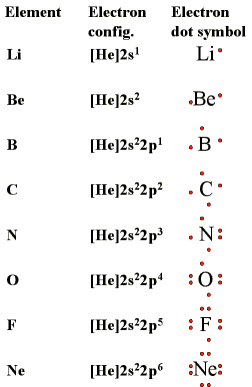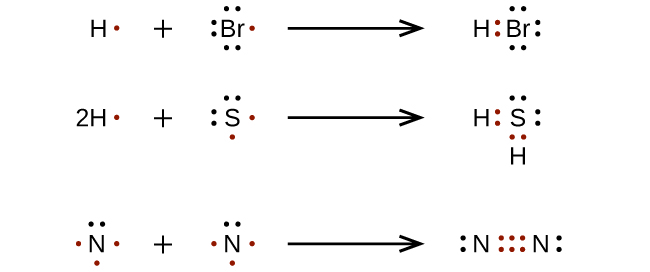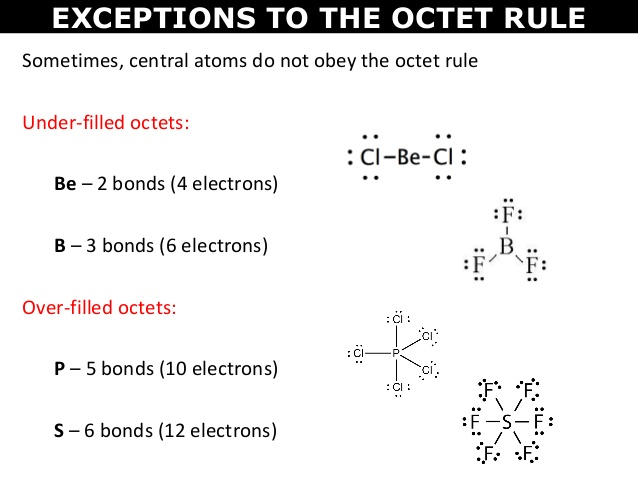Dalia Savy
A
Anika P
AP Chemistry 🧪
269 resourcesSee Units
What are Lewis Dot Diagrams?
Lewis dot diagrams are a way of drawing molecular structures while also showing valence electrons and bonds. Lewis dot diagrams serve as one of the most important topics in this unit and the course as a whole, with the ability to draw out any molecule opening the door to thousands of other possibilities.
The two parts of this Localized Electron model are:
- Lone pairs: pairs of electrons localized as an atom
- Bonding pairs: pairs of electrons found in the space between atoms (often represented by a dash)

Drawing Lewis Dot Diagrams
Ionic LDS
Ionic Lewis Dot Structures (LDS) are very easy to draw out!🥳
- First, write the empirical formula of the compound down.
- Then, draw the metals and nonmetals with their respective electrons (you could do this mentally too).
- Transfer valence electrons to the nonmetal (could be done mentally)
- Write charges on ions with brackets around nonmetals
Example
- Sodium Bromide
- Going through the steps, sodium bromide's formula is NaBr
- You would remember that Na has 1 valence electron and Br has 7 valence electrons.
- When an ionic bond forms, 1 valence electron from Na is transferred to Br to create a full octet.
Here is the LDS:
Image Courtesy of Wayne Breslyn
💡Try drawing the lewis dot structure of magnesium chloride (answer at the end of the guide).
Covalent LDS
Covalent bonds are a little more difficult to draw out because the electrons are shared.
👉Here are some steps to guide you:
- Look at the empirical formula and count the number of valence electrons there should be
- Draw the central atom (in most cases it is carbon or the atom that is not hydrogen)
- Draw outside atoms and put single bonds connecting atoms together
- Draw full octets on each atom
- Octet Rule: all atoms have 8 electrons, but H only has 2
- Count the valence electrons present so far
- If there are too many electrons, erase lone pairs from adjacent atoms and make double/triple bonds
- If there are too few electrons, add some to the central atom (see exceptions section⭐)
Here are a few examples, but we'll go through some more using these steps!

⭐Exceptions to the Octet Rules
There CAN be exceptions to the rules!
→ If there are too few electrons in your drawing, you may break the octet rule ONLY IF the element has an atomic number of 14 or greater (you would be able to add extra electrons to the central atom)
→ There may be extra electrons outside the atom- d subshell would be used for bonding
→ Multiple bonds if not enough electrons
→ Less than an octet → B (6 electrons) and Be (4 electrons)
→ Odd # of electrons -complete pairing of an octet would not be able to happen
Here is another quick overview:

Examples
Let's go over some easy lewis dot structures first:
a) O2
Here is what you should be thinking as you get used to drawing these:
- Looking at the periodic table, we can notice that oxygen is in group 16. This means it has 6 valence electrons and since there are two oxygen atoms, there should be 12 valence electrons in this diagram total.
- Since there are only two oxygen atoms, we could just draw them side by side (there is technically no central atom here).
- Connect the two oxygen atoms with a single dash, which represents two valence electrons.
- Draw 3 lone pairs on both of the oxygen atoms so that they both have a full octet. Here is what you should have so far:
- Count the amount of valence electrons. There are 14 of them, but we only want 12. Since there are too many electrons, we can convert this single bond into a double bond.
Now to check, we can count the number of valence electrons. Since there are 12 total and the octet rule is fulfilled on both atoms, this is the lewis dot structure of O2.
💡Try drawing the lewis dot structure of N2 (answer at the end of this guide).
b) CS2
- Looking at the periodic table, we know that C has 4 v.e. and S has 6 v.e.. This accounts for a total of 16 valence electrons.
- Draw carbon, the central atom.
- Draw two sulfur atoms, connecting them to the carbon atom with a single bond (4 electrons so far out of 16).
- Draw full octets on all 3 atoms. Here's what it should look like so far:
- In this current diagram, there are a total of 20 valence electrons, but we need 16. Therefore, we should form two double bonds. Here is what the final LDS looks like:
c) XeF2
- Xe has 8 v.e. and F has 7 each. Therefore, there is a total of 22 valence electrons in this compound.
- Xe is the central atom, since there is only one.
- Draw Fluorine's on either side and connect them with a single bond. Draw 3 full octets' again. Here's what it looks like so far:
- There is a total of 20 electrons; we need two more! This is where breaking the octet might need to happen. Since Xe has an atomic number of 54, which is much greater than 14, we can break the octet rule and add the necessary number of electrons to Xe. Here is what the final LDS looks like:
🌟Try drawing the lewis dot structure of the polyatomic ion NH4+.
Answers to Questions Given Throughout
1) Magnesium chloride
You always want to draw out the empirical formula first and make sure the charges cancel out to be 0 because magnesium chloride actually has 2 Cl atoms! Mg has a +2 charge while Cl has a -1 charge, so the compound is MgCl2. Here is the lewis dot structure:
Image Courtesy of Wayne Breslyn
You could also draw only one Cl atom, with a 2 coefficient outside of the brackets (indicating there are two chlorine ions)
2) N2
Once you go through all the steps, you'll notice that there are 14 valence electrons. We only need 10 though, so we have to form double or triple bonds. If you draw a double bond, you'd still notice that we don't have 14 valence electrons, so there should be a triple bond.
Image Courtesy of Clutch Prep
3) NH4+
Since the compound has a charge, we would just have to take one electron away.
Here, it looks like there would be 9 valence electrons but since there is a +1 charge, there should only be 8 valence electrons total.

Image Courtesy of MaketheBrainhappy
These lewis dot structures get slightly more complex in the next key topic but practice makes perfect!
Browse Study Guides By Unit
⚛️Unit 1 – Atomic Structure & Properties
🤓Unit 2 – Molecular & Ionic Bonding
🌀Unit 3 – Intermolecular Forces & Properties
🧪Unit 4 – Chemical Reactions
👟Unit 5 – Kinetics
🔥Unit 6 – Thermodynamics
⚖️Unit 7 – Equilibrium
🍊Unit 8 – Acids & Bases
🔋Unit 9 – Applications of Thermodynamics
✏️Frequently Asked Questions
✍️Free Response Questions
🧐Multiple Choice Questions
📆Big Reviews: Finals & Exam Prep

Fiveable
Resources
© 2023 Fiveable Inc. All rights reserved.